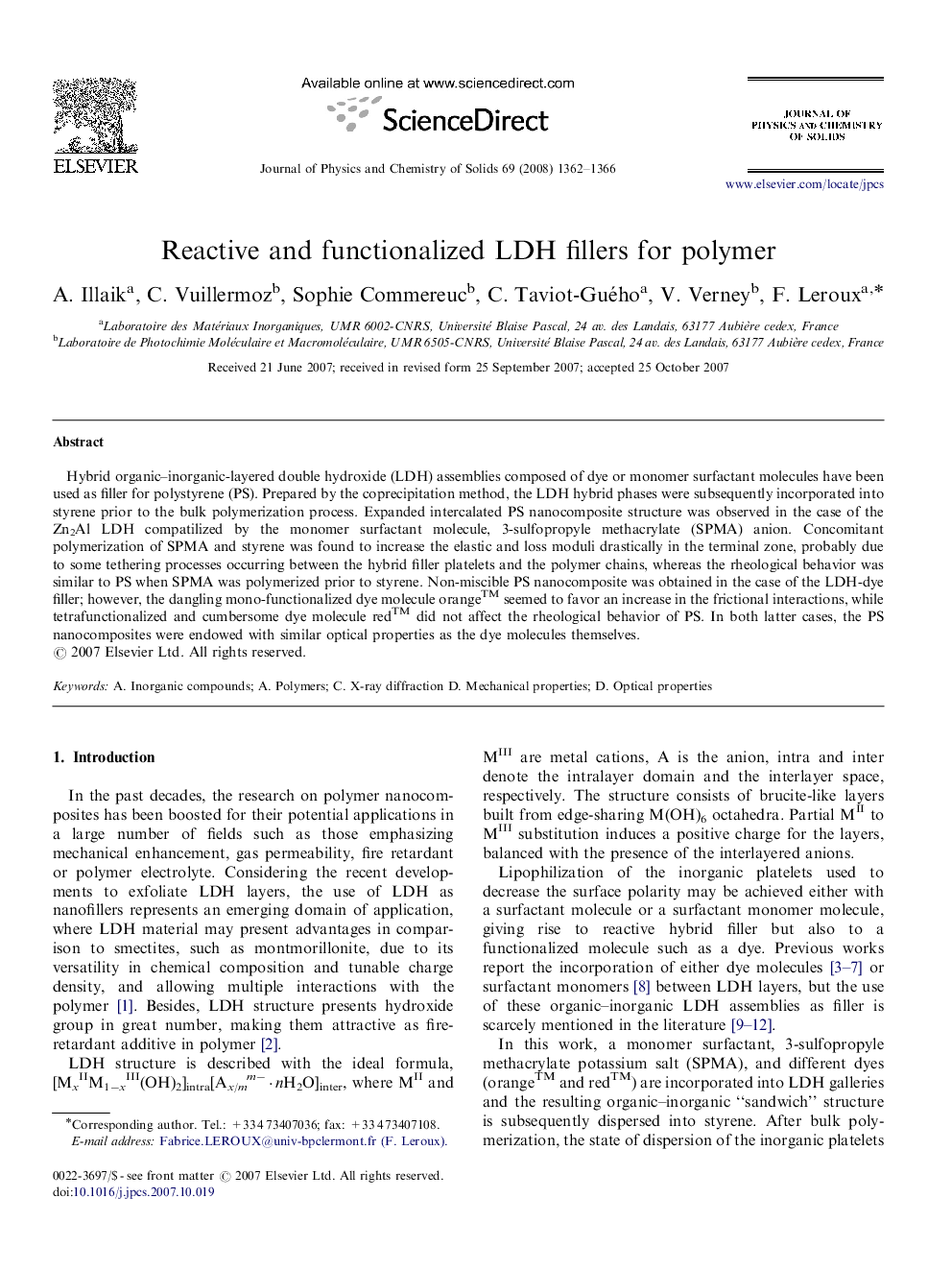| Article ID | Journal | Published Year | Pages | File Type |
|---|---|---|---|---|
| 1517588 | Journal of Physics and Chemistry of Solids | 2008 | 5 Pages |
Hybrid organic–inorganic-layered double hydroxide (LDH) assemblies composed of dye or monomer surfactant molecules have been used as filler for polystyrene (PS). Prepared by the coprecipitation method, the LDH hybrid phases were subsequently incorporated into styrene prior to the bulk polymerization process. Expanded intercalated PS nanocomposite structure was observed in the case of the Zn2Al LDH compatilized by the monomer surfactant molecule, 3-sulfopropyle methacrylate (SPMA) anion. Concomitant polymerization of SPMA and styrene was found to increase the elastic and loss moduli drastically in the terminal zone, probably due to some tethering processes occurring between the hybrid filler platelets and the polymer chains, whereas the rheological behavior was similar to PS when SPMA was polymerized prior to styrene. Non-miscible PS nanocomposite was obtained in the case of the LDH-dye filler; however, the dangling mono-functionalized dye molecule orange™ seemed to favor an increase in the frictional interactions, while tetrafunctionalized and cumbersome dye molecule red™ did not affect the rheological behavior of PS. In both latter cases, the PS nanocomposites were endowed with similar optical properties as the dye molecules themselves.
